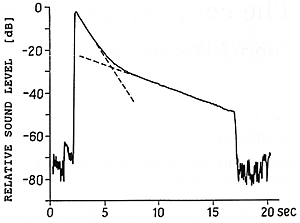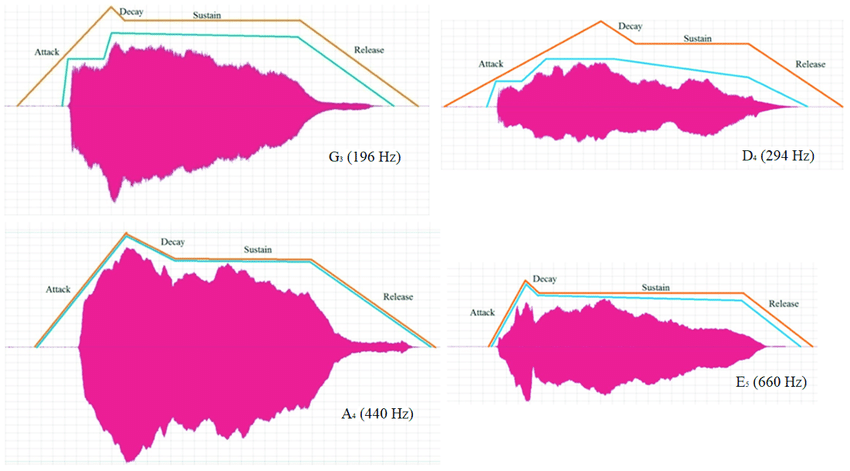This question of mine started when I heard the piano score of Mars by Gustav Holst. Here is the piano score:
How do the pianists even reach triple f? I myself have come across extreme dynamics in piano pieces even by Romantic Period composers such as Mendelssohn. Not really in Beethoven or earlier and Chopin's extreme dynamics are just the extremes of quiet. That is relatively easy.
Extremes of loudness though are hard, especially for a pianist. This is partly because at some point increased force doesn't equal increased dynamic, just increased chance of breaking the piano. It also has to do with the attack of the piano compared to other instruments:
Here is the typical attack of a piano:
As you can see, no chance of a crescendo during the note length so whatever dynamic level it is at at the peak is the loudest it will be. The rest of it will get quieter at a relatively linear rate until the key is released.
By contrast, here is a violin's attack:
As you can see, there is a natural crescendo in the attack so reaching extreme dynamics is no problem. It is one of many instruments that can do a 1 note crescendo or diminuendo. In principle all bowed strings, woodwinds, and brass can crescendo or diminuendo a single note.
When I see something like ffff in a score, here is how I treat it both in my playing and in my compositions:
Orchestral: Yeah, go ahead and crescendo further, no screech will be noticeable at the level of the symphony orchestra
Soloist that isn't piano: Lower the absolute dynamics so that the same relative dynamic is acheived without a screech(so piano becomes pianississimo for example)
Piano: Extend the fortissimo until a quieter dynamic is reached, maybe using octaves to get a crescendo of mass rather than of volume. Once a dynamic of forte or quieter is reached, change the dynamic as usual.
So how do pianists reach dynamics past fortissimo in scores such as Mars by Gustav Holst that include these extreme dynamics? Do they start extremely quietly to get a relative dynamic rather than an absolute dynamic? Do they add mass(like octave doublings) to the music to get a crescendo of mass once maximum dynamic from force is reached? Or do they do something completely different?


